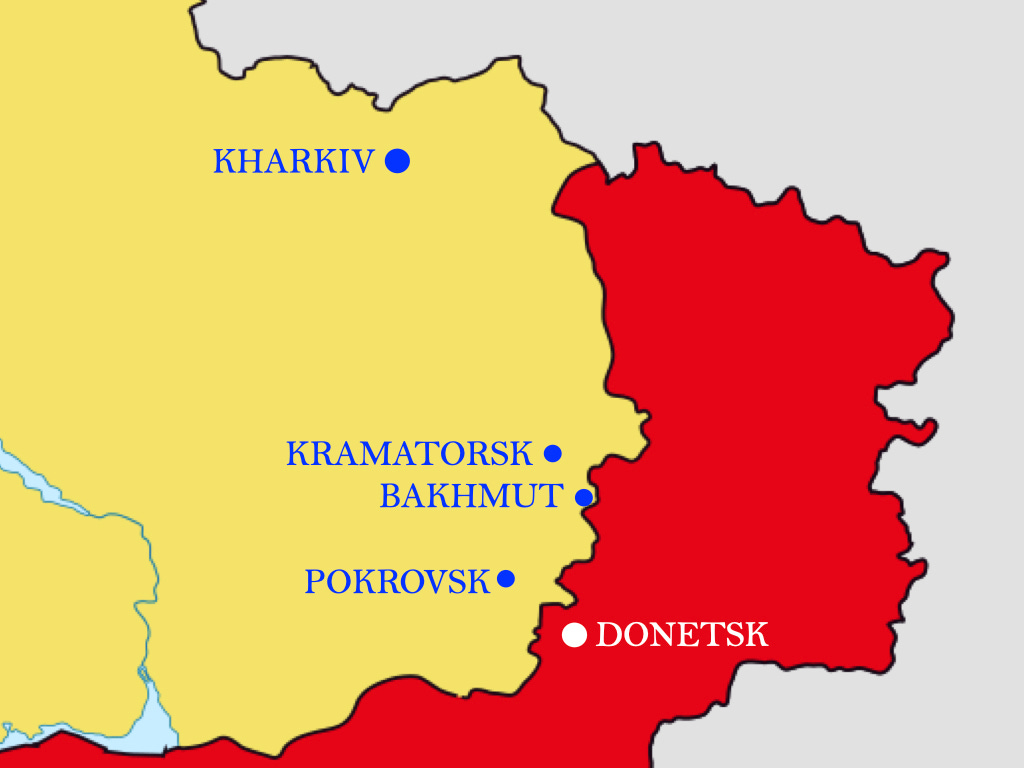Two Cases of Combat Refusal
The War in Ukraine
In July of 2022, the Ministry of Defense of the Russian Federation published a pair of Telegram posts, each of which claimed that elements of ‘the Kraken nationalist formation’ of the Ukrainian armed forces had refused to obey orders to deploy from their base in Kharkiv to places close to the scene of the ongoing battle for Bakhmut. The second of the posts also alleged that the second instance of ‘collective indiscipline’ resulted in an intramural firefight.
“On July 7, 226th battalion of the Ukrainian nationalist formation Kraken was ordered to move from Kharkov to Pokrovskoe, under the command of Soledar operational tactical group. But nationalist commanders and fighters refused to carry out this order.”
“On July 13, more than 200 fighters of the 226th Kraken nationalist formation refused to follow the command's order to move to the Kramatorsk area and claimed a "transfer" to the Kharkov city territorial defence. During the ensuing fight with the commanders and the ensuing gunfight, 6 militants were killed.”
My attempts to make sense of these two reports quickly ran afoul of the fact that, in 2022, two very different battalions of the territorial defense of the city of Kharkiv bore the number ‘226’.
The Reconnaissance and Sabotage Battalion
The first of these two outfits, the 226th Reconnaissance and Sabotage Battalion, received the number ‘226’ when, on 12 March 2022, it joined the 127th (City of Kharkiv) Independent Territorial Defense Brigade.1 One of a series of new territorial defense brigades formed in the immediate aftermath of the Russian invasion of 24 February 2022, the 127th Brigade belonged to a separate service of the Ukrainian Armed Forces, the Territorial Defense Forces. Thus, rather than being organized and equipped for front-line combat, it had been designed to protect the city of Kharkiv from small scale raids, pro-Russian partisans, and civil unrest.
On the day that the 226th Reconnaissance and Sabotage Battalion joined the 127th Brigade, the men of that unit wore a patch that combined the word “Azov” (in Latin letters) and a glyph symbolizing the city of Kharkiv In this way, the battalion celebrated its ties to the Azov Regiment as well as its connection to its home town. (The glyph could be read as both an abstraction of the Kharkiv skyline and a representation of the consonants of the name of that city.)
The same patch was also worn by members of the 225th Reconnaissance Battalion, which also joined the 127th Brigade on 12 March 2022. This practice reminded all concerned that both the 225th and 226th Battalions had been formed by the splitting of the Regional Defense Unit (Azov), a militia that had been organized by local veterans of the Azov Battalion at the time of the Russian invasion.
Neither the 225th Reconnaissance Battalion nor the 226th Reconnaissance and Sabotage Battalion used those designations for more than two weeks. On (or about) 23 March 2022, both units left the 127th Brigade (and thus the Territorial Defense Forces) in order to form the Kraken Special Unit of the Main Intelligence Directorate.
The Territorial Defense Battalion
Within days of the departure of the old 226th Reconnaissance and Sabotage Battalion, the 127th Brigade recycled the number ‘226’. The new recipient of that number, the 226th Independent Territorial Defense Battalion, bore little resemblance to the previous owner of its number.2
Where the old battalion enjoyed close ties to the National Corps political party, the new unit was organized by Oleksandr Osadchyi, an executive of a local construction materials company. (While Mr. Osadchyi had played a role in the civic life of the suburb in which his factory was located, he does not seem to have been involved in electoral politics.) Where the leaders Kraken Special Unit made extensive use of Viking imagery, the founders of new 226th Battalion preferred to draw upon the Cossack tradition. (The patch of the new 226th Battalion combined several Cossack symbols- a saber, a mace, a footed cross, and a laurel wreath - with the crenelated shield of the Territorial Defense Forces.)

July 2022
On 16 July of 2022, the commander of the Kraken Special Unit, Serhiy Velichko, posted to his Telegram channel a video celebrating “the work of our assault groups” in Bilohorivka, a town some twenty-two kilometers (thirteen miles) northeast of Bakhmut. This short (155-second) film, which begins with a title sequence that reads ‘July 2022: Fire Raid on Bilohorivka’, showcased both artillery strikes against large farm (or industrial) buildings and the actions of small groups of riflemen in the streets of a rural village.3 Four days later, Mr. Velichko used the same platform to share a video that featured an interview with a man identified as a Russian intelligence officer who had been captured in Bilohorivka by men of the Kraken Special Unit.
On 3 August 2022, Velichko used his Telegram channel to solicit volunteers for the Assault Company of the Kraken Special Unit. The advertisement that he posted included a list of frequently-asked questions, the first of which was ‘Is it possible to fight only in Kharkiv?’ (The answer, which would have been obvious to all who saw the videos about fighting in Bilohorivka, was ‘No, our task is to liberate all of Ukraine.’)
The Facebook page of the 226th Independent Territorial Defense Battalion tells a somewhat different story. Posts for the month of July 2022 (which begin here) suggest that, while the unit (or, at least, substantial portions thereof) spent that month in the field, the positions occupied were close enough to Kharkiv to allow members to return to town for award ceremonies, the acceptance of donated equipment, and, in one case, a funeral. Moreover, while one member of the unit died during this month, pictures taken in the field suggest an experience that had more in common with the annual training of an American National Guard unit than the fighting that was then taking place in, and around, Bakhmut.
Evaluation
The histories of the two Ukrainian battalions that bore the number ‘226’ in 2022 shed little additional light on the instances of ‘combat refusal’ alleged by the Russian reports. It is, after all, possible that, on either side of the fight for Bilohorivka, some of the men of the Kraken Special Unit had refused to deploy to the scene of that engagement. It is also possible that the gaps in the ranks of the Assault Company had been caused, at least in part, by an intramural fire fight.
Likewise, the scenes of al fresco dining and visits by Japanese film crews captured on photos posted on the Facebook page of the 226th Independent Territorial Defense Battalion could well have co-existed with resistance to orders to trade such bucolic surroundings for hard duty in the ruins of Bakhmut.
At the same time, nothing I have read, or seen in videos or photographs, supports the proposition that either, let alone both, of the alleged incidents took place. Thus, the only thing that I know for certain is that, before hitting the ‘send’ button, the author of the Russian reports should have checked his enemy order-of-battle against the Facebook pages and Telegram channels of the units in question.
For the Other Articles in this Series:
To subscribe, support, or share:
When applied to a brigade of the Ukrainian Armed Forces, the word ‘Independent’ [Окремa] indicates that the formation in question does not belong to a division.
When applied to a battalion of the Ukrainian Armed Forces, the word ‘Independent’ [Окремий] indicates that the unit in question does not belong to a regiment.
I have yet to see a picture of Serhiy Velichko wearing rank insignia. Neither have I read anything about him in which he is addressed by, or described as holding, military rank.








If true, it is yet more evidence that the Ukrainians need a general Petain of their own, if they want to keep going. By that I mean the Petain of 1917, not 1940. I hope they never resort to the latter.
To be truly effective, propaganda has to have a kernel of truth as its basis. Lacking that, you are just indulging in MSU (Make Stuff Up) operations and hoping enough of it sticks before someone notices.